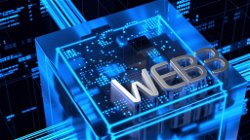Introduction to the Theory of Automata and Formal Languages
Vihaan Disouza
. 2 min read
The theory of automata and formal languages is a fundamental area of computer science and theoretical computer science that deals with the study of abstract machines and the languages they can recognize and generate. It forms a crucial foundation for various aspects of computing, including programming languages, compiler design, artificial intelligence, algorithmic analysis, and even online chat applications. This article provides an overview of this intriguing field, its key concepts, and its practical applications.

What is Automata Theory?
Automata theory explores the concept of abstract machines or computational models that can perform computations and recognize patterns in strings of symbols. These machines are mathematical abstractions used to study the capabilities and limitations of computational systems. Automata theory is primarily concerned with the study of automata models, which are classified into different types based on their capabilities and expressiveness. The most common types of automata include Finite Automata (FA), Pushdown Automata (PDA), and Turing Machines (TM).
Formal Languages
Formal languages are sets of strings of symbols, and they play a significant role in automata theory. These languages are defined by specific rules and grammars, which determine the structure and syntax of valid strings in the language. Regular languages, context-free languages, context-sensitive languages, and recursively enumerable languages are some of the important classes of formal languages, each with varying levels of expressive power.
- Regular Languages and Finite Automata: Finite Automata (FA) are simple computational models capable of recognizing regular languages. They consist of a finite number of states and transition rules that guide the machine from one state to another based on the input symbols. Regular languages have practical applications in text processing, lexical analysis, and pattern matching.
- Context-Free Languages and Pushdown Automata: Context-Free Languages (CFL) are a more complex class of languages, and they cannot be recognized by finite automata. Instead, Pushdown Automata (PDA) are used to recognize these languages. PDA extends the concept of finite automata by incorporating a stack, allowing it to maintain memory and handle nested structures. Context-free languages are essential in the design of programming languages and compilers.
- Turing Machines and Recursive Languages: Turing Machines (TM) are the most powerful computational models in automata theory. They can simulate any algorithmic computation and recognize recursively enumerable languages. The concept of Turing Machines laid the groundwork for the theory of computation and is instrumental in understanding the limits of what can be computed.
Applications Automata and Formal Languages
The theory of automata and formal languages has numerous applications in computer science and related fields.
Some of the key areas where these concepts find application include:
- Compiler Design: Designing compilers that translate high-level programming languages into machine code involves parsing and recognizing context-free languages.
- Natural Language Processing (NLP): Techniques from automata theory are used in language processing tasks like syntax analysis and semantic parsing.
- Software Verification: Automata theory is utilized in formal verification methods to ensure the correctness of software systems.
- DNA Sequencing: Formal languages and automata are applied in analyzing and comparing DNA sequences in bioinformatics.
- Robotics: Automata models can be employed to control robotic systems and plan their actions efficiently.
Conclusion
The theory of automata and formal languages is a crucial field in computer science that explores the theoretical foundations of computation. It enables computer scientists to understand the capabilities and limitations of computational systems, design efficient algorithms, and develop innovative applications across various domains. Its significance continues to grow as technology advances and computational problems become increasingly complex.
More Stories from
The World Wide Web: Connecting Humanity Across Time and Space
From its inception by Sir Tim Berners-Lee to its exponential growth, learn how the Web revolutionized communication, commerce, and society at large.
Beyond Earth: The Quest for Extraterrestrial Life and the Search for Alien Intelligence
Explore the captivating journey of humanity's quest for extraterrestrial life and the search for alien intelligence beyond Earth.
International Telecommunication Union (ITU): Bridging the Global Digital Divide
The International Telecommunication Union (ITU) is a specialized agency of the United Nations, dedicated to promoting global connectivity.
Illuminating the Future: A Comprehensive Guide to Light Emitting Diodes (LEDs)
Discover the history, working principles, and diverse applications of LEDs, from lighting and displays to automotive advancements.
Secure Encryption Payment Protocol: Ensuring Safe Transactions in the Digital Age
Learn about the benefits of SEPP, its role in preventing fraud, and how it fosters consumer trust in the rapidly growing world of online commerce.
.png?height=40)









.png?width=40&aspect_ratio=1:1)
